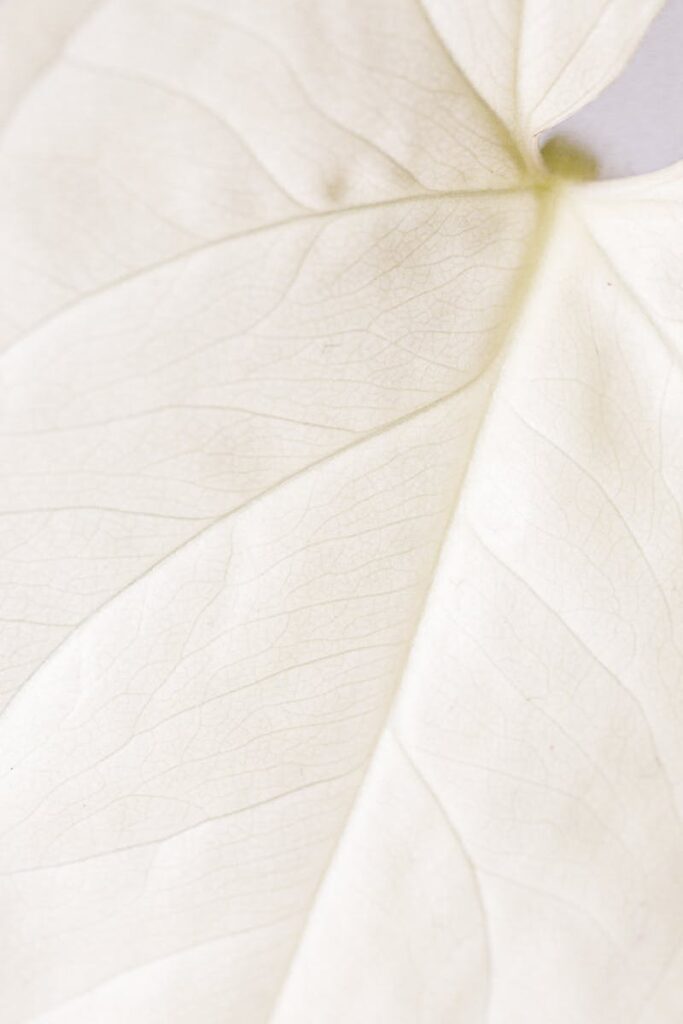
For millennia, the color white has captivated humanity, weaving itself into the fabric of our civilizations, our spiritual beliefs, and our scientific understanding of the universe. Far more than just the absence of color or the extreme end of the visible spectrum, white represents a profound convergence of physics, history, and human meaning. It is the canvas upon which our stories are painted, the silence from which all sounds emerge, and the pristine state we often aspire to.
From the earliest cave paintings to the most advanced digital displays, white has played an indispensable role in how we perceive and interpret our world. Its achromatic nature, reflecting all visible wavelengths of light, makes it intrinsically linked to illumination, purity, and clarity. As we embark on this in-depth exploration, we will uncover the multifaceted essence of white, delving into its etymological roots, its storied past, its scientific intricacies, and its powerful presence in both the natural and man-made realms.
This journey will reveal how white, in its various manifestations, has continuously shaped our understanding of perfection, honesty, beginnings, and neutrality. It is a color that unites disparate concepts, appearing as both a symbol of peace and a marker of rebellion, a hue of joy and one of mourning. Join us as we peel back the layers of this fascinating color, guided by authoritative research and engaging narrative storytelling, to appreciate the enduring significance of white in our collective human experience.

1. **The Fundamental Nature and Perception of White** At its core, white is the lightest and an achromatic color, defined by fully reflecting or scattering all visible light wavelengths, making it the opposite of black. Our visual system perceives light as white when it stimulates all three types of color-sensitive cone cells in roughly equal amounts, demonstrating that “white light” encompasses a range of spectral distributions.
On television and computer screens, white is generated by mixing red, blue, and green light at full intensity through additive mixing, a principle rooted in Isaac Newton’s 1666 discovery that white light itself is composed of multiple colors. Newton famously demonstrated this by using prisms to both break apart and reassemble white light into its spectral components.
A “white object” is distinct, characterized by a surface that diffusely reflects all visible light without absorbing any, regardless of wavelength, making it the lightest possible color and an achromatic hue. This property is vital for color constancy, allowing our eyes to perceive object colors consistently even as illumination changes, a concept formalized by the International Commission on Illumination as “adapted white.”
Read more about: Beyond the Badge: Uncovering the Hidden Flaws in 14 Fan-Favorite Vehicle Models

2. **The Linguistic Journey of White: Tracing Its Etymological Roots** The word “white” originates from Old English “hwīt” and Proto-Germanic “*hʷītaz,” shared across Old High German, Old Norse, and Gothic. This deep lineage extends to Proto-Indo-European “*kʷid-,” connecting it to Sanskrit “śveta” (white/bright) and Slavonic “světŭ” (light), illustrating an ancient association with illumination.
Interestingly, Proto-Germanic also offered “*blankaz,” meaning “white, bright, blinding,” which was borrowed into Late Latin as “*blancus.” This gave rise to the Romance words for white, such as French “blanc” and Spanish “blanco,” highlighting a dual linguistic evolution for the concept of white in European languages.
Beyond Europe, the concept of white is expressed with fascinating cultural specificity; Inuit has seven distinct words for its nuances, while Sanskrit boasts specific terms for bright white, teeth-white, sandalwood-white, and autumn moon-white. Japanese uses six different words depending on brilliance or dynamism, reflecting deeply intertwined language, perception, and cultural interpretation of this universal color.
3. **White in Prehistoric and Ancient Civilizations: A Canvas of Early Meaning** White’s artistic presence dates to Paleolithic cave paintings, like Lascaux (18,000-17,000 years ago), where artists used calcite or chalk for backgrounds and highlights. In ancient Egypt, white linen symbolized purity for Isis’s priests and priestesses and was used for wrapping mummies, linking the color to sanctity and the afterlife.
Ancient Greeks and other civilizations associated white with mother’s milk, a symbol of nourishment, as seen in the myth of Zeus being nursed by Amalthea. Viewing the world in terms of dark and light, Greeks considered white fundamental; Pliny the Elder noted painters like Apelles used only four colors, including the highly toxic lead white, for its luminosity.
In Rome, white was an emblem of citizenship; the plain white “toga virilis” was worn by citizens, while officials sported a chalk-brightened “toga candida,” giving us “candidate.” The Latin “candere” (to shine) also gave us “candle” and “candid.” Vestal Virgins wore white linen, a “palla,” and a veil, symbolizing their purity, loyalty, and chastity, deeply embedding white in civic and religious identity.

4. **White in Postclassical History and Religious Art: Sacred Symbolism Takes Hold** The early Christian church adopted white as a symbol of purity, sacrifice, and virtue, making it the color for priests during Mass and for Cistercian monks. Under Pope Pius V in 1566, white became the official papal attire, representing supreme spiritual authority, while early Benedictines later shifted to black for humility.
Postclassical art extensively featured the white lamb, symbolizing Christ’s sacrifice, as seen in Jan van Eyck’s “Ghent Altarpiece.” White also depicted the Transfiguration, with Jesus’ clothing “shining, exceeding white as snow,” a luminosity captured by artists like Fra Angelico using light gold backgrounds to enhance divine radiance.
The white unicorn, a legend symbolizing purity, chastity, and grace, was a common subject in medieval art, often depicted in the lap of the Virgin Mary, linking mythical virtue with sacred innocence. During the Renaissance, Leon Battista Alberti encouraged artists to add white to colors for “hilaritas” (gaiety), leading to a brighter and more vibrant artistic palette.

5. **The Evolution of White in Modern History, Fashion, and Architecture** From the 16th century, white’s role evolved: it was a mourning color for widows, including French queens, and a symbol of dedication for knights in white tunics. The 18th century saw white dominate Baroque and Rococo architectural interiors, unifying lavish designs to create monumental, ethereal spaces.
Fashion embraced white in the 18th century, with aristocratic men wearing powdered white wigs and women in elaborate white gowns. Post-French Revolution, “blanc cassé” became fashionable, inspired by ancient Greek and Roman attire; these “Empire style” dresses, though stylish, proved tragically unsuited for cold weather, as demonstrated by Joséphine de Beauharnais’s fate.
The 18th and 19th centuries established white as the universal color for underwear and linens due to its durability during boiling washes, with worn-out linen repurposed into high-quality paper. In art, James McNeill Whistler used delicate whites to convey innocence and fragility in “Symphony in White No. 1.”
The 20th century cemented white’s role in modernist art and architecture as a symbol of simplicity and modernity. Artists like Malevich and Mondrian embraced its absoluteness, while architects such as Le Corbusier and Richard Meier championed stark white, unadorned structures, defining an era of “calm and powerful architecture.”
Read more about: Fact vs. Fiction: 14 Historical Myths You Probably Still Believe

6. **The Science of White Light: Unraveling Its Composition** Scientific understanding of white light was revolutionized by Isaac Newton in 1666, who proved it was composed of multiple colors, not fundamental. He demonstrated this by passing white light through a prism to separate colors and then reassembling them with a second prism, fundamentally reshaping light theory.
In modern technology, white light on screens is produced by additive mixing of red, green, and blue (RGB) light at full intensity. Natural sources like the sun and stars emit white light across visible wavelengths, while artificial sources like LEDs and fluorescent lamps also generate perceived white light.
Crucially, there’s no single spectral specification for “white light”; various spectral power distributions can be perceived as white, a phenomenon known as metamerism. This explains why different “white” light bulbs (e.g., 2700K vs. 6000K) still allow consistent object color identification due to our visual system’s adaptive color constancy.

7. **The Physics of White Objects and Color Constancy: How Surfaces Reflect** A “white object” is precisely defined as a surface that diffusely reflects all visible light without absorbing any, making it the lightest possible color regardless of the incident light’s wavelength. Unlike specular reflection (mirrors), a white surface scatters light uniformly, classifying it as an achromatic color lacking chroma.
Color constancy is closely linked to white objects, enabling our visual system to maintain an object’s perceived color despite variations in illumination’s spectral distribution. This adaptive process, called chromatic adaptation, allows consistent color identification under diverse lighting conditions.
In photography and cinematography, the “white point” is crucial, transforming other color stimuli for accurate representation; its manipulation can even explain optical illusions like “The Dress.” The International Commission on Illumination defines “adapted white” as an achromatic stimulus with unity luminance factor, acknowledging its variability within a scene.
8. **White Features in the Natural World: Nature’s Pristine Palette** Nature paints with white in breathtaking ways, from snow-covered landscapes to the White Cliffs of Dover. Snow, a delicate mixture of air and tiny ice crystals, appears white because it diffusely reflects or scatters nearly all incident sunlight. This scattering is so efficient that very little visible spectrum is absorbed, presenting snow to our eyes as the pure color of sunlight, sometimes even sparkling as light bounces within ice crystals.
Similarly, clouds derive their brilliant white from a comparable process. Composed of water droplets or ice crystals mixed with air, clouds absorb very little light. Instead, most light is scattered uniformly, making them appear white. However, shadows from other clouds can lend a gray hue, and some clouds naturally exhibit a darker underside due to self-shadowing.
Beyond snow and clouds, white graces more permanent natural formations. The stunning White Cliffs of Dover owe their characteristic color to their high chalk content, primarily limestone, which effectively reflects sunlight. Likewise, certain beaches, such as Hyams Beach, are renowned for their strikingly white sands. These sands often contain high amounts of quartz or eroded limestone, reflecting or scattering sunlight. Tropical white sand beaches might also be enriched with fine white calcium carbonate from seashells ground by ocean waves.

9. **White Materials: From Ancient Pigments to Modern Innovations** The quest for pure white pigments has a history as long as art itself, evolving from rudimentary natural sources to engineered compounds. Chalk, a type of limestone rich in calcite, was among the earliest white pigments, used by Paleolithic artists. In the Renaissance, Bianco di San Giovanni, akin to chalk, was meticulously prepared from dried lime, providing essential whites for artistic expression.
A significant, albeit dangerous, advancement was lead white, dating back to the 4th century BC. Ancient authors detailed its laborious creation: lead exposed to vinegar fumes and cow dung slowly corroded into lead carbonate. Despite its toxicity, lead white was prized for centuries for its luminosity and covering power. Safer alternatives only emerged in the 19th century.
The 19th century introduced zinc white, less toxic but less opaque. However, the true revolution arrived between 1916 and 1918 with titanium white. Made from titanium dioxide, this pigment boasts twice the covering power of lead white and is the brightest white pigment available. By 1945, it dominated the market, becoming an artist’s preferred white and a ubiquitous ingredient in toothpaste and sunscreen. Today, “whiter than white” effects in paper and fabrics are achieved through optical brightener agents (OBAs), which absorb ultraviolet light and re-emit it in the blue visible spectrum, making materials appear more luminous.
10. **The Science of Bleaching and Whitening Agents: A History of Brightness** The desire for whiter fabrics has driven bleaching for millennia, evolving from natural methods to sophisticated chemical processes. Initially, whitening was achieved by leaving fabrics in the sun, allowing its bright light to naturally fade colors. This ancient technique harnessed sunlight, where high-energy photons, particularly in the ultraviolet range, could disrupt chemical bonds within chromophores—the molecular parts responsible for absorbing light and imparting color.
The 18th century marked a turning point with the development of various chlorine bleaches, including sodium hypochlorite and calcium hypochlorite. Modern bleaching agents extend beyond chlorine, often utilizing peroxides such as hydrogen peroxide, sodium percarbonate, and sodium perborate. While most bleaches function as oxidizing agents, breaking chemical bonds to render them colorless, a smaller category acts as reducing agents, like sodium dithionite, which convert chromophore double bonds into single bonds, eliminating their ability to absorb visible light.
Beyond traditional bleaches, advancements in laundry technology introduced detergents containing fluorescent chemicals. These chemicals actively glow, absorbing ultraviolet light and re-emitting it as visible blue light, making fabrics appear literally “whiter than white.” This innovative approach leverages optical properties to enhance perceived brightness, going beyond simply removing stains to actively augment textile whiteness.

11. **White on the World Stage: National Flags and Enduring Meanings** White is a ubiquitous and significant color in national flags globally, though its specific symbolism is as varied as the histories it represents. In the flag of the United States and the United Kingdom, white’s presence traces to the historic flag of England, featuring the red St George’s Cross on a white background. For France, the white holds historical depth, representing either the monarchy or “white, the ancient French color,” as Marquis de Lafayette noted, highlighting its enduring national significance.
White is a ubiquitous and significant color in national flags globally, though its specific symbolism is as varied as the histories it represents. In the flag of the United States and the United Kingdom, white’s presence traces to the historic flag of England, featuring the red St George’s Cross on a white background. For France, the white holds historical depth, representing either the monarchy or “white, the ancient French color,” as Marquis de Lafayette noted, highlighting its enduring national significance.
Many flags within the Arab world prominently feature white as part of a pan-Arab color scheme. These flags, including Egypt, Palestine, Jordan, Syria, Kuwait, and Iraq, often adopt the colors of the Arab Revolt of 1916: red, white, green, and black. Here, white typically symbolizes purity, peace, or the Umayyad Caliphate, linking modern national identity to shared historical and cultural heritage. The Philippines’ flag also incorporates white to symbolize unity.
The flag of Vatican City presents a unique and profound symbolism for its white and gold colors, which “symbolize the colors of the keys to heaven given by Jesus Christ to Saint Peter.” Gold represents spiritual power, while white signifies worldly power, linking the flag’s design directly to foundational Christian belief and Papacy’s authority. Other nations imbue white with equally powerful meanings: India’s flag features white to represent “light, the path of truth,” while Ireland’s flag uses white in its center to signify “a lasting truce between Orange and Green.” From the Netherlands’ historic red, white, and blue, to these diverse contemporary interpretations, white remains a unifying and meaningful element in the visual language of national identity.
As we conclude this expansive journey through the multifaceted world of white, it becomes unequivocally clear that this achromatic hue is far more than a simple reflection of light. From the earliest human attempts to capture its essence in prehistoric art to its complex role in the latest technological innovations, white has persistently shaped our perceptions, beliefs, and material culture. It has been a symbol of purity, divinity, neutrality, and truth across religions and civilizations, a canvas for artistic expression, and a vital element in scientific understanding, from the microscopic scattering of light in snow to the cosmic remnants of distant stars. Its presence in everything from the solemnity of sacred rituals to the vibrant displays of national identity underscores its enduring power. White, in its quiet brilliance, remains an eloquent testament to the interwoven tapestry of human experience and the natural world, forever inviting us to look closer, to understand deeper, and to appreciate the profound significance of its seemingly simple yet infinitely complex nature.






